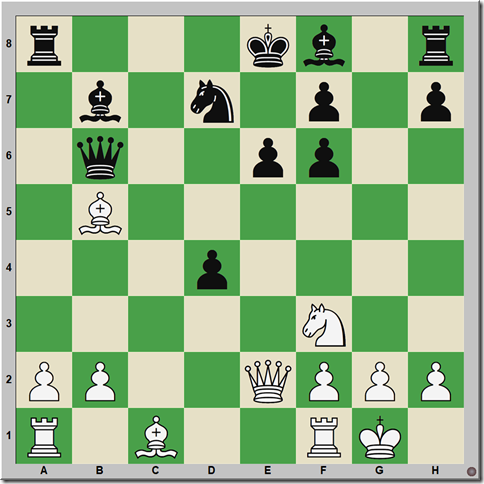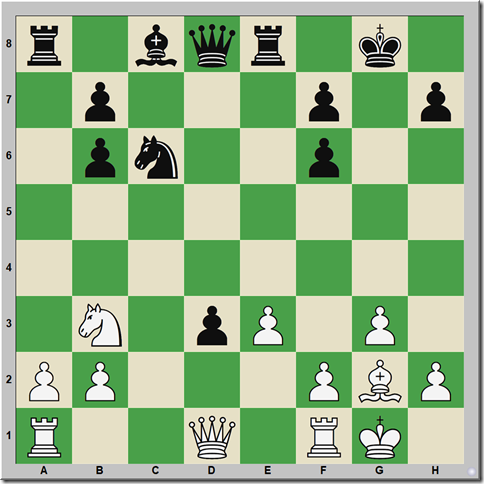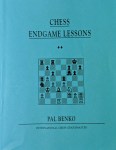This review has been printed in the May 2020 issue of Chess Life. A penultimate (and unedited) version of the review is reproduced here. Minor differences exist between this and the printed version. My thanks to the good folks at Chess Life for allowing me to do so.
Correspondence Database 2020 – $199.95 new. Downloadable.
https://shop.chessbase.com/en/products/corr_2020
UltraCorr2020v2 – 55 euros. Downloadable.
http://www.chessmail.com/UC-2020/UC2020-intro.html
Fernschach 2020. 15 euros mailed outside of Germany; 13.50 euros inside Germany. http://www.fernschachbund.de/fernschach-cd/index.html
Correspondence chess is taking on a new relevance in modern chess, and not just because it can be played during a pandemic.
Because most organizations allow players to make use of all resources in move generation, including computers, games at the upper echelons of correspondence chess are fantastically rich, melding high-powered silicon power with human guidance to create some astounding games.[1]
Top level players are taking notice. Attentive readers will note the increasing reference to correspondence games in game annotations, and it’s clear that the elite players are mining correspondence games for opening ideas. GM Erwin l’Ami, second to GM Anish Giri, has a column in the New in Chess Yearbook where he shows new and interesting ideas from correspondence play, and recently he has taken up the mantle himself, playing games through the International Correspondence Chess Federation (ICCF).
l’Ami is not the only Grandmaster to try his hand at correspondence chess. GM Ulf Andersson had a brilliant, if brief, dalliance with the form, and now GM Krishnan Sasikiran is perhaps the most active correspondence player among over-the-board GMs. I had intended to show you a crushing win by Sasikiran (Jaulneau-Sasikiran, ICCF 2014) on the Black side of a King’s Indian here, but l’Ami has annotated an even more amazing Sasikiran game in the newest (#134) New in Chess Yearbook.
SCOTCH GAMBIT [C56]
Wieland Belka (2500)
Krishnan Sasikiran (2550)
corr ICCF, 31.03.2019
1.e4 e5 2. Nf3 Nc6 3. d4 exd4 4. Bc4 Nf6 5. e5 d5 6. Bb5 Ne4 7. Nxd4 Bd7 8. Bxc6 bxc6 9. 0–0 Bc5 10. f3 Ng5 11. Be3 0–0 12. f4 f6!?
12… Ne4 is the main line here, while 12. … Ne6 is a playable alternative. Sasikiran’s move is not a novelty, as l’Ami seems to imply. Still, he has worked out a fascinating new concept in this very well-known opening.
13. exf6
- fxg5? fxe5 14. Nf5 d4 gives Black back the material with interest, as l’Ami points out.
13… Nh3+!
The key point. 13. … Ne4 14. fxg7 Re8 was tried in Dostal-Efimov (ICCF 2015) but Sasikiran improves on this dramatically.
14. gxh3 Bxh3
l’Ami says that Black has full compensation here; for the details, check out his notes in Yearbook 134. The game concluded:
15. b4 Bb6 16. Rf3 Bg4 17. fxg7 Re8 18. Bf2 Qf6 19. c3 Qg6 20. Kh1 Bxd4 21. cxd4 Qh5 22. Nd2 Re4 23. Kg2 Rxf4 24. Bg3 Rxd4 25. Kg1 Bxf3 26. Qxf3 Qxf3 27. Nxf3 Rxb4 ½–½
It is not easy for the non-initiate to find correspondence games to study, although (as we will see) the data is out there if you know where to look. Much simpler is the use of a commercial correspondence database, and this month, we’ll take a serious look at two such products and mention a third in passing.
The ChessBase Correspondence Database 2020 (Corr 2020) contains 1,626,801 games, 5,674 of which are annotated. Author and correspondence Senior IM Tim Harding’s UltraCorr 2020 is a long running alternative to ChessBase’s database, with this year’s edition coming in at 2,150,356 games, 37,048 of which are annotated.
Two sets of numbers stand out here: the number of games / annotated games in each database, and their respective prices. Corr 2020 has fewer games for more money, while UltraCorr is less expensive but includes vastly more games. But numbers don’t always tell the full story, and for me, the differences between Corr 2020 and Ultracorr are rooted in the types of products each tries to be.
Corr 2020 is a typical ChessBase product. The data is very clean and standardized, and it benefits from its publisher’s relationship with top players. The unused Sasikiran game mentioned above – Jaulneau-Sasikiran – is annotated by the player in Corr 2020, and the database is accompanied by a set of fourteen videos from from some of ChessBase’s stable of authors, all of which deal with games from correspondence play.
UltraCorr is much more of a one-man job. Harding has done excellent work in scouring the web for games, giving his database over 500,000 more games than are found in Corr 2020, but not all of the games are of good quality, and there is less standardization of names and events. Some over-the-board games have even crept in.
UltraCorr’s nearly sevenfold advantage annotated games over Corr 2020 is also something of a mixed bag, Harding has obviously spent a lot of time collecting and inputting annotations, and UltraCorr contains nearly all of the notes that appeared in the nine year run of Harding’s well-regarded Chess Mail magazine. But more than two thousand of the annotations in UltraCorr are “anno-Fritzed,” automatically annotated by ancient versions of Fritz and Junior, and still more are annotated in name only.
Both Corr 2020 and UltraCorr 2020 are designed to be comprehensive historical documents, covering the earliest correspondence games on record along with World Championships, Olympiads, etc. Both have a tremendous number of recent games as well. So how does one choose between them?
UltraCorr is certainly the best “bang for the buck,” with more games and (legitimate) annotations for less money. But there is something to be said for the well-curated data in Corr 2020 as well. When I built my own research database from earlier incarnations of these two sources some months ago, I used Corr 2018 as the basis for the new “Frankencorr,” and then “cannibalized” games from UltraCorr 2019 to build it out. My reason for doing so was to try to retain as much of Corr 2018’s clean data – names and tournaments – as possible.
Corr 2020 and UltraCorr 2020 are both fine products, each with their own selling points and drawbacks. Just to complicate things further, let me briefly mention a third option. Herbert Bellmann, a German Senior IM in correspondence, is the publisher of Fernschach 2020. It’s my sense that Bellmann is not trying to compete with either ChessBase or Harding with this product; rather, this is more or less Bellmann’s own private database for sale, something that can be seen in the data itself.
Fernschach 2020 contains 1,513,390 games, with annotations to 12,655 of them. That last number is, as with UltraCorr 2020, somewhat misleading. Many of the games listed as annotated lack notes, but more than 1500 are annotated by Bellmann himself. The database does not try to be historically comprehensive – the first game is from 1978! – and instead appears to focus intensely on German correspondence events. For that reason it may be a valuable resource for the chess researcher, particularly given its modest price.
Fernschach 2020 was published in October 2019, while Corr 2020 appeared in November 2019 and the final edition of UltraCorr 2020 was released in February 2020. This gives us an indication of how up to date each product is, although again, the dates alone can be misleading. Case in point: the Belka-Sasikiran game given above appears in both Fernschach and UltraCorr, but not Corr 2020, even though Corr 2020 appeared after Fernschach.
None of the three databases discussed in this month’s column include updates, which are especially important for those users looking for new opening ideas in correspondence play. This can be overcome with a bit of work on the part of end users.
The great majority of important correspondence games are played through the ICCF. Those with accounts at iccf.com (it’s free to sign up) can download new game files at the beginning of each month, and the frugal among us could even create a fairly substantial correspondence database just by downloading and collating all of the games at ICCF.
Other important correspondence sites and sources of games are:
- Lechenicher SchachServer (LSS) – https://www.chess-server.net/en/
- German Correspondence Chess Federation (BdF) – https://www.bdf-schachserver.de/en/
- Deutscher E-Mail-Schachclub (DESC) – http://www.desc-online.de/
- Freechess (German language only) – https://www.freechess.de
- International E-mail Chess Club (IECC; no engines allowed) – https://www.chess-iecc.com/
It is sufficient to simply merge .pgn files from these sites into one’s database of choice. Perfectionists will want to process those files to remove diacritical marks and hyphens from names, as Bellmann, ChessBase, and Harding all do, in the interest of standardization. For this, I can recommend either the Text Mechanic website[2] or a combination of Notepad++ and “Python Script”[3] as effective tools. Trying to edit all the games manually in ChessBase is also possible, but it is difficult and time consuming.
….
A personal note before we go: this is my last review column for Chess Life, as I will be taking over editorial duties come June 1st. Thanks to Dan Lucas and Melinda Matthews for giving me page space each month to try and do real criticism, something that is a bit of a rarity in today’s publishing world. While I suspect that readers will not have agreed with all of my judgments, I trust that the seriousness and honesty I’ve tried to bring to the page came through.
I’m thrilled that my dear friend and mentor IM John Watson will be taking over review duties for Chess Life next month. For me, John is the best reviewer in the business, and I can’t wait to see what he has to say.
[1] Note that events run by US Chess do not permit computer use, so if you have a competitive itch you need to scratch and you don’t want Stockfish’s help, this might be worth investigating!
[2] http://textmechanic.com/text-tools/basic-text-tools/remove-letter-accents/
[3] https://superuser.com/questions/484141/replacing-all-special-accented-characters-with-equivalent-regular-characters-in













